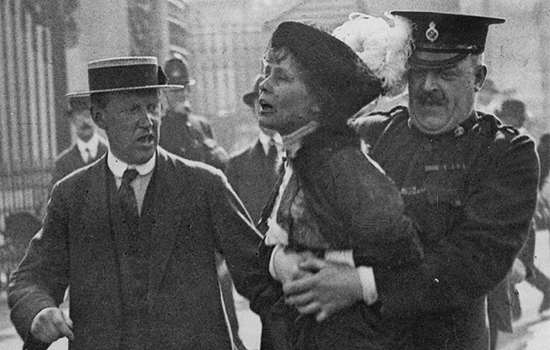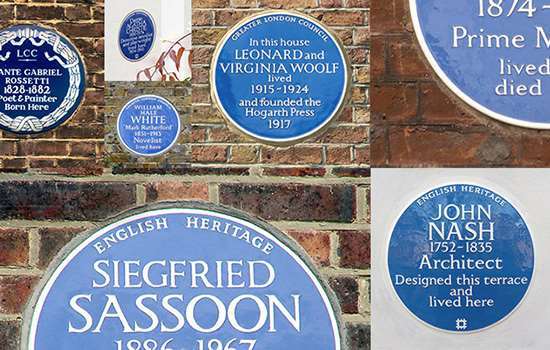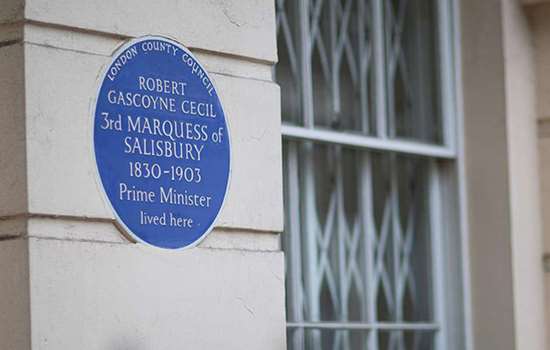Dr John Conolly and the former Hanwell Asylum
Plaque erected in 2022 by English Heritage at C Block, St Bernard’s Hospital, Uxbridge Road, Southall, London, UB1 3EU, London Borough of Ealing
All images © English Heritage
Category
Medicine
Inscription
The former HANWELL ASYLUM where Dr JOHN CONOLLY 1794–1866 promoted the humane treatment of mental illness from 1839
Material
Ceramic
Dr John Conolly (1794–1866) and the former Hanwell Asylum are commemorated with a blue plaque at St Bernard’s Hospital in Southall. It was at the Hanwell Asylum that Conolly, a supporter of the asylum system as a means of care and cure, made his influential contribution to transforming the care of people who had been hospitalised with mental health disorders.
Conolly’s early career
John Conolly was born in Market Rasen, Lincolnshire, on 27 May 1794. After serving as an army officer he turned to a career in medicine, and graduated MD at Edinburgh University in 1821; his thesis, ‘De statu mentis in insania et melancholia’, prefigured his later specialisation. He practised medicine in Sussex, London and Warwickshire for some years, while also engaging in medical journalism, and published a treatise on mental illness in 1830.
Hanwell asylum
In 1839 Conolly was appointed Resident Physician at the Middlesex County Pauper Lunatic Asylum at Hanwell, and moved in with his wife and four children. With overall medical and administrative control, he was in a position to make an influential contribution to his field. This was a time when central government was pressing counties and boroughs to make purpose-built provision for their ‘pauper insane’ (whose care and treatment were paid for from the local rates) and when there was much debate about the best way to look after lunatics, as people with mental disorders or disabilities were then known.
Hanwell Asylum, established in 1831, was one of the biggest of the new asylums, housing about 850 patients when Conolly arrived. It was highly visible because of its size and closeness to London. Its first Medical Superintendent, William Ellis, had introduced a system of ‘moral management’ of patients, which attempted to induce normal social conduct largely through employment and behavioural modelling.
Non-restraint
John Conolly’s great innovation was immediately to augment this with a system of ‘non-restraint’, which he had seen on a research trip to Lincoln Asylum just before taking up his post at Hanwell. This dispensed with the handcuffs, leg irons and straitjackets that were standard equipment in most lunatic asylums, replacing them with rigorous order and staff supervision. Conolly also argued for the provision of a decent – though never luxurious – environment.
Initially controversial, Conolly’s methods drew support from The Times, The Lancet and parliamentary forces pressing for reform. By 1846 the new national Lunacy Commission embraced non-restraint as the ruling orthodoxy. Conolly became the leading member of the emerging group of experts in the treatment of the ‘insane’. For some time, Hanwell Asylum was a beacon of good practice, celebrated at home and abroad in both the specialist and popular press.
Conolly resigned as Resident Physician at Hanwell in 1844, after the managing committee decided to reduce his all-encompassing control; he kept the role of Visiting Physician until 1852 but returned to private practice. He remained an acknowledged expert on the management of asylums and an advocate for non-restraint throughout his career. His 1846 articles in The Lancet ‘On the Construction and Government of Lunatic Asylums’ were followed in 1856 by a lengthy monograph, The Treatment of the Insane without Mechanical Restraints. By this date his methods had become accepted practice, particularly in the county asylum system, and in 1858 he was elected president of the Association of Medical Officers of Asylums and Hospitals for the Insane. Conolly died on 5 March 1866 at Hanwell.
Blue plaque
The formerly extensive grounds and buildings of the Hanwell Asylum are now divided. Parts have been developed for housing, part is Ealing General Hospital, and part remains as St Bernard’s Hospital, which continues to provide mental health treatment. Many of the Grade-II-listed asylum buildings (designed in 1829 by William Alderton and extended throughout the 19th and early 20th centuries) remain. The original two-storey range of wards formed three sides of a square, terminated on each flank by a three-storey octagonal building, with further ranges extending at right angles from these octagons.
The plaque has been placed on the octagon at the end of the left-hand wing, which in Conolly’s time was the male ‘side’ of the asylum.


